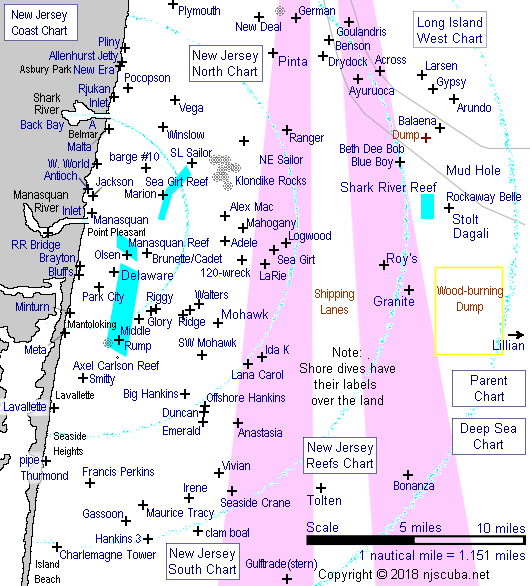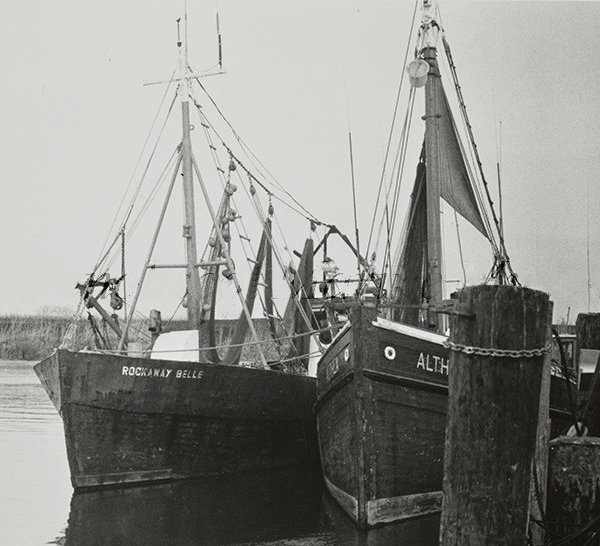Stolt Dagali (3/4)
Collision Occurs off Point Pleasant
Crewmen Lost After Ships Crash
The Daily Register
Friday, November 27, 1964
7c per copy
NEW YORK (AP) — Nineteen crewmen of a Norwegian tanker are dead or missing from Thanksgiving Day tragedy in which their vessel was sliced in two by an Israeli luxury liner heading out on a carefree Caribbean cruise.
The collision occurred 18 miles off Point Pleasant, N.J. shortly after 2 a.m. Thursday in dense fog.
The stern quarter of the tanker sank in the pall of darkness and fog. Water poured into the liner's bow compartments, which were sealed off.
Rescue Operation
An air-sea rescue operation was quickly put in motion.
Clad variously in nightdress or ballroom attire, many of the cruise liner's 616 passengers raced to decks to watch through the mist.
Eventually, 24 of the tanker's 43-member crew were snatched from the seas, from swamped lifeboats and from the barely floating forward section of the vessel. Among them were a stewardess - the lone woman aboard - and the tanker's captain.
Some of the men saved from the sea were only partially clad. They were oil-smeared, blue with cold and in some cases insensible from shock.
As time wore on through a gray dawn, the Atlantic yielded 13 bodies. A massive daylong search of the area finally was called off at sundown without any trace of six men still missing.
Pride of Fleet
The vessels involved were $20-million liner Shalom, pride of the Israeli merchant fleet and its seven-months-old flagship, and the 12,723-ton Norwegian tanker Stolt Dagali.
The 629-foot-long, 25,320-ton Shalom had sailed from New York at 11:15 the night before, after a round of gay farewell parties on what was to have been a leisurely 10-day cruise to the West Indies.
Aboard the sparkling white ship were 1,076 persons. They included crew members and a host of entertainers. No one suffered an injury of any consequence, it was reported.
The tanker, whose home port is Oslo, was Inbound for Newark, N.J., on a voyage from Philadelphia. Her tanks were 80 per cent filled with a cargo of vegetable oil.
Collision Course
As the two plowed through the foggy murk on what was to be a collision course, neither apparently had any impending sense of danger even though both were equipped with radar.
Their captains later declined to comment on circumstances preceding the collision.
Suddenly the rending crash occurred, with the Shalom's bow slicing into the tanker.
Some of the tankers crew were flung from their bunks into the icy ocean. They found themselves fighting for life without an instant's notion of what had happened.
Some took to lifeboats while 10 others, including Capt. Kristlan Bendorsen, remained with the forward section that included the tanker's bridge.
SOS Message
At 2:23 a.m., the tanker sent an SOS message. Moments later it asked the Shalom to stand by and give aid.
The Coast Guard flashed an alert for a possible "major marine disaster." For a time there were fears the liner might be in danger too. Coast Guard ships, planes and helicopters sped for the scene.
Another cruise ship returning from the Caribbean, the 20,000-ton Santa Paula, noted the position and headed for it also.
Aboard the Shalom, passengers still awake were, startled by the crunch of the collision.
Some couples on the dance floor were thrown off their feet. Others abed were tossed about and one or two sent rolling onto the floor.
The ship's Intercom loudspeakers announced that there bad been a collision. Passengers were assured that the liner was not in any danger. They were told the ship was'standing by to pick up survivors from the tanker.
Passengers said afterward there was no panic, and praised the liner's crew for its conduct.
Passengers said the dance band began playing again about 4 a.m., the bar was reopened and the ship served free drinks after the first round.
Tons of salt water poured through a huge gash at the liner's bow. The crew quickly sealed forward compartments off by closing watertight doors.
After the inbound cruise liner Santa Paula reached the crash scene, she stood, by about 800 feet from the bow section of the tanker to serve as a windbreak while a helicopter took off the 10 men aboard it. The captain was the last to leave.
The Coast Guard gave this report on weather conditions: An hour after the collision, the Stolt Dagali radioed that visibility was one-half mile, but that there was no strong wind, high waves or sea swell.
At 5:55 a.m., a Coast Guard cutter at the scene radioed that waves were 4 to 5 feet, winds were 10 miles an hour, and visibility had improved to 4 miles. The same conditions prevailed at noon.
The skipper of the tanker and Capt. Avner Freudenfoerg of the Shalom, obviously under orders from higher authorities, had little to say upon arrival in New York.
Capt. Freudenberg told newsmen that he was on the bridge. He said the weather was foggy and acknowledged that the ship's radar was working. But he added: "I am not going to be drawn into any detailed discussion."
He was asked specifically if he had ascertained the cause of the accident. "Not at this moment," he replied. "It was foggy, true," he said, but declined further comment.
The captain, 53, a veteran of 30 years at sea, is a senior among the skippers of the Zim Navigation Co., Ltd.
The master of the tanker, Capt. Bendorsen, said he also was on his bridge at the time of the impact.
"It was very foggy … we couldn't see", he said, speaking in a weary voice scarcely above a whisper.
He declined to say whether his ship's radar was operating. Before the captain met with reporters an attorney for the Norwegian line told them that no questions dealing with happenings before the crash would be answered.
The captain spoke in high praise of the Coast Guard's rescue work.
"They got ships and planes out there very quickly," he said. "It was the best job I've ever seen in my life. They got a plane out through the fog, I don't see how they could see."
Because the two vessels were in international waters, the U.S. Coast Guard has no jurisdiction for an investigation into the collision.
The apparent alternative is for the Israeli and Norwegian governments to set up a joint board of inquiry to assess blame and damages.
In Jerusalem, Israeli officials cabled Norway's shipping minster voicing shock over the accident and asking him to convey condolences to bereaved families of the tanker's crew members.
Doctors, nurses and clerks were roused from their beds at dawn to report to the Point Pleasant, N. J., Hospital, where an unknown number of survivors were expected.
A helicopter brought in one body and a 19-year-old survivor. Later boats and ambulances brought in four more survivors and nine more bodies.
A crowd of morbidly curious waited for the boat bringing in the bodies. "Why would anyone bring their children down to watch this?" a policeman asked.
Is that a body, is that a body?" one little girl asked excitedly as a blanket-draped body was taken off a Coast Guard cutter.
Many New Jerseyans were aboard the Israeli liner Shalom en-route to a southern holiday. They awoke to learn they were en-route back to New York Harbor with a 40-foot gash in the ship's bow. Coast Guardsmen and airmen from Lakehurst Naval Air Station worked through the day to find and rescue survivors.
At Lakehurst
Sailors Brought To Air Station
The Daily Register
Friday, November 27, 1964
7c per copy
LAKEHURST (AP)-The Naval Station here was alive with excitement but also grim.
In the mess hall, sailors were talking about the survivors brought in during the morning from the collision of a Norwegian tanker and the Israeli passenger liner, the Shalom, off the New Jersey coast yesterday.
Then the door opened and nine of the Norwegian survivors entered. The room immediately grew silent.
All eyes were on the nine as they trooped down the chow line, tin trays in their hands, for Thanksgiving Day dinner.
Master of Tanker
In the lead was the master of the tanker, Kristian Bendorsen, a stocky man of 54 with thinning blond hair, gray around the temples. He wore a black and white checkered flannel shirt and khaki trousers with a flashlight jammed into his hip pocket.
The others, in line behind him, were clad in sweaters, dungarees, khaki pants.
For the most part the men did not smile. They talked little. A Navy man led them to a private section of the mess hall where they sat at three tables and, still in silence, ate from their trays piled high with turkey, ham, green peas, mashed potatoes, candied yams, pie and coffee.
Less than 100 yards away, six of their comrades were in hospital beds, too badly hurt or shaken up to go to the dining hall.
Four of them were in a ward together. They too were silent, not wishing to talk or even to reflect on their ordeal.
Night of Horror
The men were dirty, oil from their hair staining the clean white pillowcases.
One of them, Svere Tvrnherg, told in halting English and with the aid of a diagram in a news man's notebook of his night of horror in the Atlantic.
Awakened by the grinding crash, he leaped into a life boat with nine other men. The life boat quickly became filled with water. One of the nine died.
Tvrnberg and four others were plucked from the life boat by a helicopter piloted by Lt. George Gilpin.
Gilpin and other helicopter plots and crew members were across the base at the hangar, talking with newsmen and among themselves about the saga.
Clad in a bright orange flying suit with a knife strapped to his belt and a yellow Mae West life jacket around his shoulders, Gilpin told of spotting the wreckage of the tanker, the drifting life boat, the debris-flecked oil slick, as dawn broke.
At the main gate of the air station, two Marines were discussing the rescue mission.
"It's a helluva way for those fellows to spend Thanksgiving," one Marine said. Replied the other, "For the ones who made it here, I'd says it was a helluva good way."
Area Woman Watched Rescue
The Daily Register
Friday, November 27, 1964
7c per copy
MATAWAN - Mrs. Helen Bliss, 171 Broad St., witnessed the rescue operation from aboard the liner Santa Paula, en route from the Caribbean to New York. She is home today.
"I was looking through a porthole," she said, "When
suddenly I saw two bright red lights. One dropped straight down out of sight. It appeared to be a flare but I couldn't be certain.
"I went up on deck and learned of the collision. Our captain had apparently been ordered to circle the area for signs of survivors in the water. He had ordered the lifeboats to stand by to pick any up.
"We watched the helicopters taking people off the bow of the tanker but I didn't see anyone in the water."


